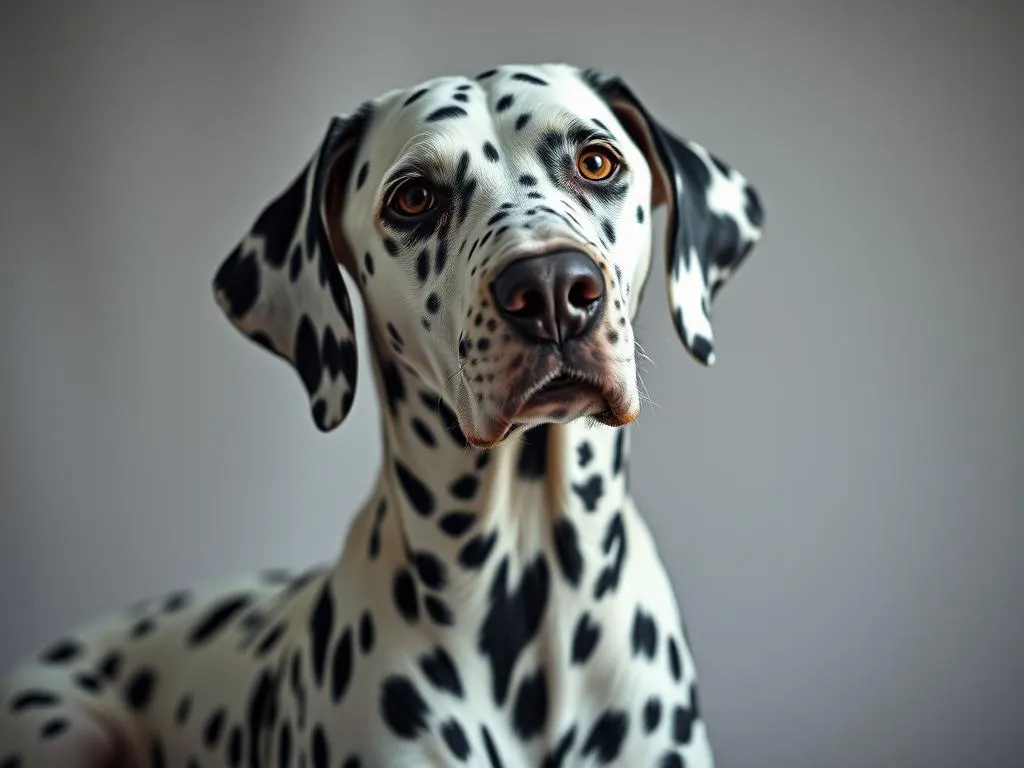
Dalmatians are one of the most recognizable dog breeds, known for their striking appearance and energetic personality. With their unique spotted coat and historical significance as firehouse mascots, they have captured the hearts of dog lovers around the world. This guide delves into the Dalmatian breed, exploring its history, characteristics, behavior, health considerations, and more.
History of the Dalmatian
Origins of the Breed
The Dalmatian breed traces its roots back to the Dalmatia region of Croatia. This area is where the breed was first developed, originally serving as carriage dogs. They played a crucial role in guarding horse-drawn carriages, providing both protection and companionship. As the breed evolved, Dalmatians became synonymous with firefighting, often accompanying fire trucks and helping to clear the way for emergency responders.
Evolution Over Time
Throughout the years, the Dalmatian transitioned from a working dog to a beloved family pet. This shift can be attributed to their friendly nature and adaptability. In the late 19th century, the breed began gaining recognition, leading to the establishment of breed clubs and formal breed standards. Key milestones in the breed’s recognition include its appearance in dog shows and the publication of breed-specific literature.
Cultural Significance
The Dalmatian has made a significant impact in popular culture, especially through media portrayals. The animated film “101 Dalmatians” introduced the breed to a new generation, solidifying its status as a beloved companion. Furthermore, Dalmatians have become symbols of firefighting, often depicted as loyal protectors and companions to firefighters, enhancing their cultural significance.
Physical Characteristics
Size and Build
Dalmatians are medium-sized dogs, typically standing between 19 to 24 inches tall at the shoulder. Their weight ranges from 45 to 70 pounds, with males generally being larger than females. They possess a strong and athletic build, featuring a well-proportioned body that reflects their energetic nature.
Coat and Color
One of the most distinctive features of the Dalmatian is its short, dense coat, characterized by a white base adorned with black or liver-colored spots. These spots begin to develop at around two to three weeks of age, and each Dalmatian has a unique pattern. Grooming needs are relatively low, as their short coat requires only regular brushing to remove loose hair and reduce shedding.
Distinguishing Features
Dalmatians are easily recognizable due to their unique traits. Their spots, which vary in size and distribution, set them apart from other breeds. They have long, floppy ears that hang close to their heads, and their expressive eyes can be either brown or blue. Compared to similar breeds, such as the English Pointer, Dalmatians have a more robust build and distinct coat pattern.
Temperament and Behavior
General Temperament
The Dalmatian is known for its friendly and outgoing personality. They are typically affectionate with families and enjoy being part of the action. Dalmatians are energetic dogs that require regular exercise, making them a great match for active households. They are also known for their playful nature, often engaging in games with children and other pets.
Intelligence and Trainability
Dalmatians are intelligent dogs, which can be both an advantage and a challenge in training. Their high energy levels necessitate consistent and positive reinforcement training methods. Early socialization is crucial to help them develop good manners and reduce the likelihood of behavioral issues. Training should focus on commands, leash etiquette, and socializing with other dogs and people.
Common Behavioral Traits
Due to their high energy levels, Dalmatians require considerable exercise to stay happy and healthy. Daily walks, runs, and playtime are essential to prevent boredom and related behavioral issues, such as separation anxiety. If left alone for extended periods, Dalmatians may engage in destructive behavior, making companionship and interaction vital.
Health Considerations
Common Health Issues
As with any breed, Dalmatians are prone to certain hereditary conditions. Deafness is a well-known issue in this breed, with approximately 30% of Dalmatians experiencing some degree of hearing loss. Hip dysplasia and urinary stones are also common concerns. Regular veterinary check-ups and screenings can help identify and manage these health issues early.
Lifespan and Care
The average lifespan of a Dalmatian ranges from 10 to 13 years. Proper care, including a balanced diet and regular exercise, plays a critical role in ensuring a long and healthy life. Feeding high-quality dog food that meets their nutritional needs is essential for maintaining their energy levels and overall health.
Veterinary Care
Routine veterinary care is vital for Dalmatians. Recommended vaccinations include rabies, parvovirus, and distemper, among others. Regular check-ups help monitor their overall health and catch any potential issues early. Additionally, dental care is crucial, as Dalmatians can be prone to dental problems. Regular brushing and dental treats can help maintain good oral hygiene.
Living with a Dalmatian
Ideal Living Conditions
Dalmatians are versatile dogs that can adapt to various living conditions, but they thrive in environments with ample space to roam and play. While they can live in apartments, it’s essential to provide enough exercise and stimulation to meet their needs. A house with a fenced yard is ideal for allowing them to run freely.
Exercise and Activity Needs
Daily exercise is crucial for the health and happiness of a Dalmatian. They require at least 1 to 2 hours of vigorous activity each day. Activities such as jogging, hiking, and playing fetch are excellent ways to keep them physically and mentally stimulated. Engaging them in dog sports, like agility or obedience training, can also be beneficial.
Socialization and Companionship
Socialization is key for Dalmatians to develop into well-rounded pets. Early exposure to different environments, people, and animals will help them become more adaptable and less anxious. Regular playdates with other dogs and taking them to dog parks can promote positive interactions and help them build confidence.
Choosing a Dalmatian
Adoption vs. Breeding
When deciding to bring a Dalmatian into your home, you have the option of adopting from a shelter or buying from a breeder. Each choice has its pros and cons. Adoption can provide a loving home to a dog in need, while purchasing from a reputable breeder ensures you know the dog’s lineage and potential health issues. It’s essential to research and choose the right option for your lifestyle.
What to Look for in a Dalmatian
When evaluating potential puppies, look for signs of good temperament and health. A playful and curious demeanor is a positive indicator. Check for clear eyes, clean ears, and a shiny coat. If adopting, ask about the dog’s history, any known health issues, and their behavior in various situations.
Preparing Your Home
Before bringing a Dalmatian home, ensure you have the necessary supplies. Essential items include a comfortable bed, food and water bowls, quality dog food, leashes, and toys. Creating a dog-friendly environment involves removing hazards and providing a safe space for the dog to call its own.
Conclusion
In conclusion, the Dalmatian is a unique breed with a rich history and vibrant personality. Their striking appearance and friendly demeanor make them a popular choice among dog enthusiasts. However, potential owners should consider their lifestyle and ability to meet the needs of this energetic breed. Owning a Dalmatian can bring immense joy, but it also comes with challenges that require commitment and care.
Dalmatians not only make wonderful companions but also enrich the lives of their families with their playful nature and loyalty. Whether you’re considering adding a Dalmatian to your family or simply want to learn more about this fascinating breed, understanding their needs and characteristics is the first step toward a fulfilling relationship with your canine companion.









